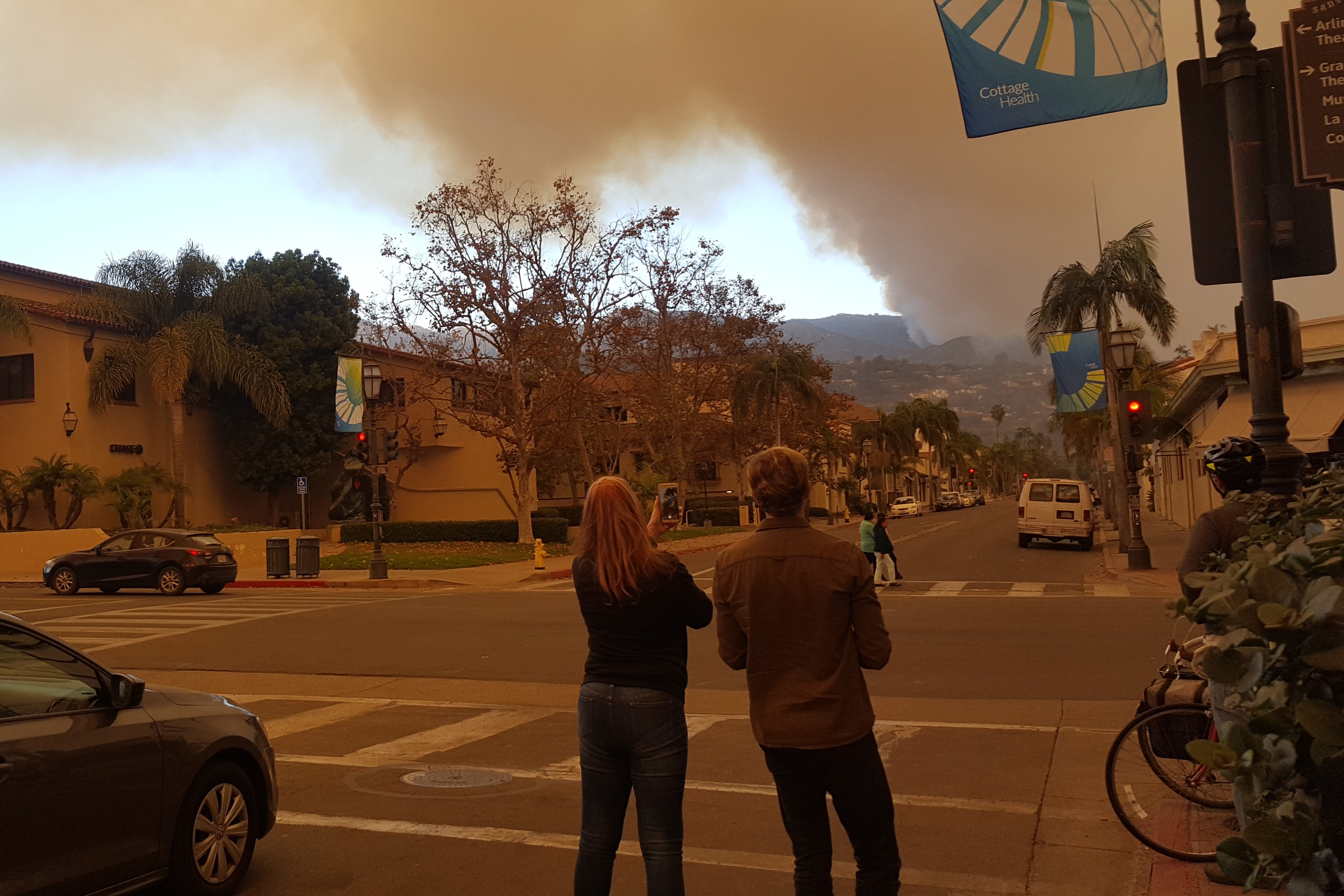In the red half-light of a smoke-covered sun, a group of us stand, faces upturned in horror as we watch a gust of wind fan a blaze in the hills above Santa Barbara, California. We are constantly watching the hills, those of us who have not evacuated. For fifteen days, the ash has fallen like a sinister snow, the sun is dimmed and scarlet, and the low humidity parches our lips. I feel the fire in my body.
On December 4th, 2017, a brush fire started near Thomas Aquinas College in Ventura County, California. By December 21st, the fire spanned more than 400 square miles and was to become the largest in California’s history.
I stand, an unwilling participant in this ethnographic moment, watching flames leap above a mansion, its adobe archways dim and fragile in the ashen glow. I watch the fire threatening these visible symbols of the southern California’s drastic income disparity not only as an observer, but as a sociologist endlessly curious about home. In southern California, “home” has myriad images, imaginaries, economies, landscapes, and cultures. Behind walls and gates, large houses in the foothills near Santa Barbara and Montecito are home to some of the wealthiest Hollywood stars, musicians, and bankers. Now, these rooms with a view are monuments to the immobility, and vulnerability, of wealth, stuck into a mountainside of tinder.
But it is not just the homes of the wealthy that are threatened. The Thomas Fire consumed both the Ventura Botanical Gardens and the Vista del Mar Psychiatric Hospital. That same week, a homeless encampment tucked beneath Los Angeles mansions ignited, and then was engulfed by a small blaze. And, as fire moved closer and evacuations emptied Santa Barbara and its neighboring cities, shops and restaurants shuttered during the holiday season.
Disasters, according to Clarke (2004), “are prosaic and ordinary,” revealing “important things about how and why society works as it does” (1). Indeed, while fire has been omnipresent in California for centuries, recent blazes highlight and heighten crises of inequality in California. After the fires are contained, rents and property values spike with demand, further polarizing the already-skewed housing markets in these highly-populated areas (2). Yet, there is little ordinary about these present-day fires. Climate patterns are shifting. The warm air that builds in the deserts and desiccates these coastal mountains is getting hotter; the Western fire season now extends into Christmas–105 days longer than in 1970 (3). All these tinder-dry hills need is a source of ignition, which, 95% of the time, has been provided by human activities.
Landscape-scale disasters, ordinary or not, blur the lines between rural and urban, nature and structures. Does this flammable land bordering our homes truly belong to us? Or do we belong to this landscape? We feel the effects of its climate, we establish bonds to a place through structures, roads, and embodied knowledge, but clearly, we cannot control the effects of our actions on the land itself. Gazing through the ash with my neighbors, we are unsure of our place in this place, and unsettled in our settlements. Where is home when our perceived boundaries between nature and people are going up in smoke?
(1) Clarke, L., 2004. Using Disaster to See Society. Contemporary Sociology: A Journal of Reviews, 33(2), p.137–139.
(2) Park, M., 2017. They survived the California fires. Now, the crisis is finding housing. CNN, p.1–9. Available at: http://www.cnn.com/2017/10/21/us/california-fires-housing-crisis/index.html.
(3) Liu, Y., Stanturf, J. & Goodrick, S., 2010. Trends in global wildfire potential in a changing climate. Forest Ecology and Management, 259(4), p.685–697.

Commentary on Rachel Tanur's Works: Venice Clothesline